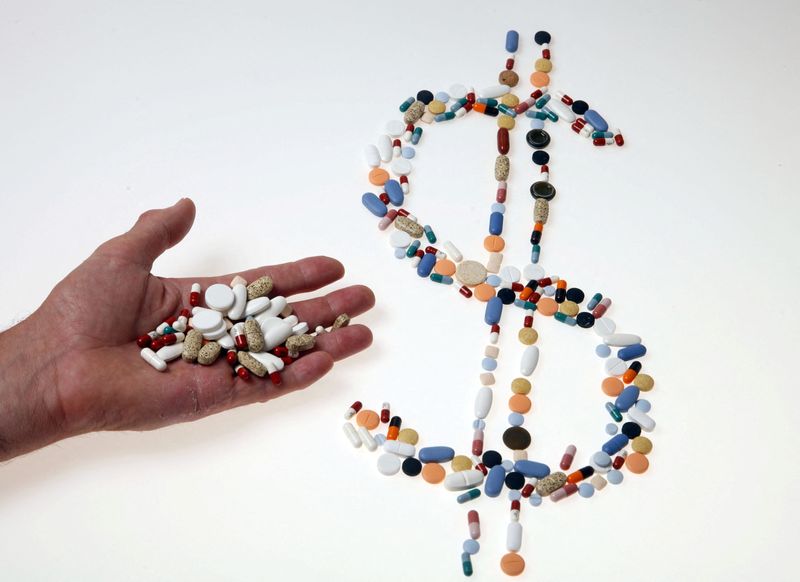By Ahmed Aboulenein
WASHINGTON (Reuters) - U.S. President Joe Biden last month signed the $430 billion Inflation Reduction Act, authorizing the federal government to negotiate prices on some prescription drugs and cap costs for the government's Medicare health program.
Here is how the law may affect some of the 63 million Americans aged 65 or over or with disabilities who receive Medicare health benefits:
FOR WHICH DRUGS WILL THE U.S. NEGOTIATE PRICES?
In 2024, the government will start negotiating what it will pay for 10 drugs, with the new prices taking effect in 2026. They will be chosen from among some of the 50 medicines responsible for the highest Medicare spending that have no cheaper generic or biosimilar alternatives.
The first group of medicines would include those sold mostly in pharmacies to treat diseases such as diabetes, cancer and arthritis. They will be announced in 2023.
The law does not include the newer medicines, only those that have been on the market for at least nine years.
It also excludes generic drugs, such as most statins and blood pressure medicines, or less expensive versions of pricey biologic drugs known as biosimilars. Many rare disease drugs - typically some of the priciest on the market - also are excluded.
The government has said it will negotiate prices on 15 drugs for 2028 and 20 for the year 2029, expanding the pool to include those administered in hospitals and by doctors, such as infusions and injectables.
According to a Kaiser Family Foundation analysis based on 2019 prices, if the 2029 parameters took effect this year, Medicare could negotiate the prices of 20 drugs that cost it $25.7 billion in 2019 and were used by about 7 million people, or 1-in-7 of those enrolled in the program that year.
WHAT ELSE DOES THE LAW DO?
Beginning in 2025, everyone enrolled in Medicare will have out-of-pocket pharmacy drug costs capped at $2,000 per year.
Other changes come into play next year, when Medicare enrollees will no longer have co-pays on vaccines and price increases on drugs will be limited to below the rate of inflation. Price increases for half of all drugs covered by Medicare outpaced inflation from 2019 to 2020, which averaged 1% that year. A third of those had price jumps of over 7.5%.
In 2024, people enrolled in Medicare plans managed by insurers, called Medicare Advantage, may benefit from a cap on premium increases of 6% until 2030.
In addition, the law eliminates the so-called prescription drug donut hole - a 5% coinsurance payment on drugs that can amount to thousands of dollars a year for more than 1 million people.
CAN DRUG COMPANIES OPT OUT?

Companies that refuse to negotiate drug prices will be subject to an excise tax on sales of up to 95%. Companies can opt to not have their drugs covered by Medicare and Medicaid, the low-income U.S. health program, but Medicare is an enormous source of revenue for drugmakers.
Companies that end up charging more than the negotiated price will face penalties up to 10 times the difference between what was negotiated and the price they actually charge. Those that raise prices beyond the inflation rate also will pay a penalty fee.